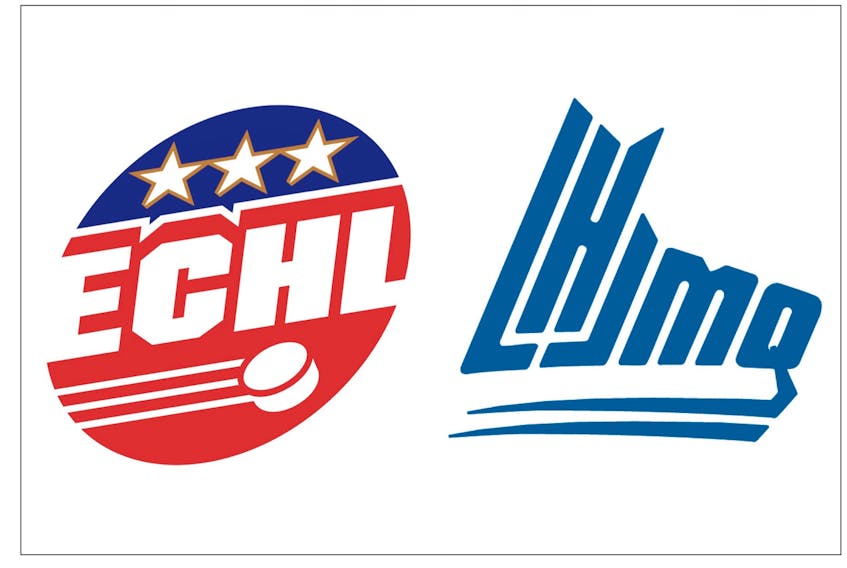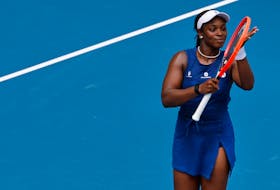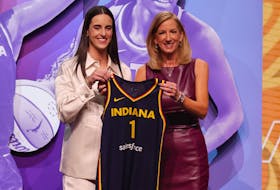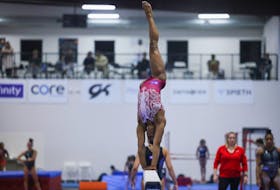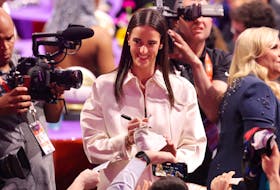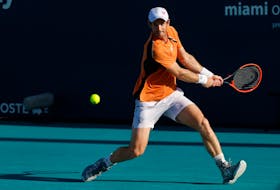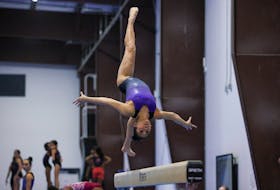It’s like attempting to judge two opponents before if you know for certain that there will be a game, but it does appear there is a competition brewing over who will bring a new hockey franchise to Mile One Centre in St. John’s.
Last week, the group that owns the National Basketball League of Canada’s St. John’s Edge re-asserted its desire to eventually operate a hockey club to play out of Mile One, and confirmed it was focused on acquiring a Quebec Major Junior Hockey League team.
Those statements came after the Edge owners had learned there was another group looking to bring a hockey team to St. John’s. That effort is headed up by St. John’s businessman Dean MacDonald, who is aiming to score an ECHL franchise.
MacDonald revealed his plans on Friday, the day after John Graham, who had negotiated the agreement to bring the Edge to Mile One, spoke on the hockey objectives of the basketball team’s owners, New York-based Irwin Simon and Robert Sabbagh.
All stated intentions aside, there is still much to be sorted out on both sides.
First and foremost, neither group has announced they have an agreement to purchase a franchise, although MacDonald says his side has begun the ECHL’s formal application process and has already had discussions with the St. John’s municipal officials; the city operates Mile One through the St. John’s Sports and Entertainment’s board of directors.
In the lease agreement it reached with Mile One/SJSE over the summer, the Edge ownership negotiated what has been referred to as an exclusivity clause, providing an 18-month window for them to bring a hockey team to Mile One.
But the emergence of an ECHL bid at least raises question about how unassailable that clause is. For their part, when asked about the Edge’s hockey exclusivity, both Graham and MacDonald have suggested it is a matter for municipal authorities to address.
In the meantime, here is some background about the two hockey leagues in question:
History
• The QMJHL, also known as the ‘Q,’ has operated since 1969 and consists of 18 teams, 12 in Quebec and six in the Maritimes. The league is part of the Canadian Hockey League, the umbrella covering the three major junior hockey circuits (the Ontario Hockey League and the Western Hockey League are the others) and is considered an amateur league within Canada, although some organizations — the NCAA for one — sees major junior hockey as professional, since there are stipends — mind you, not large ones — paid to players.
Shawinigan, Que., has been part of the QMJHL since its inception, Drummondville and Quebec City also were members of the league that inaugural season, but both were out of the ‘Q’ for a number of years before returning.
The Halifax Mooseheads became the league’s first Maritime team in 1994.
• The ECHL began as the East Coast Hockey League in 1988, but eventually adopted the acronym as its formal name in light of the circuit’s expansion across the United States. Nevertheless, it is still frequently referred to as the East Coast league or simply ‘The Coast.’
The league is considered ‘AA,’ one tier below the American Hockey League.
For the 2017-18 season, the league has 27 teams — stretching from Boise, Idaho to Manchester, N.H.
The Maine (Portland) Mariners will join next season, although the ECHL is losing the Colorado (Loveland) Eagles, who are joining the AHL as the primary farm team of the NHL’s Colorado Avalanche.
Conversely, a number of cities that recently belonged to the AHL — Manchester, Portland; Worcester, Mass; Glens Falls, N.Y.; Salt Lake City (Utah); and Norfolk, Va., — currently have AHL teams. Other former AHL cities that now have ECHL clubs are Salt Lake City (Utah), Cincinnati and Indianapolis (Indy), although the latter’s AHL participation was a half century ago.
There is currently just one Canadian-based ECHL team — the Brampton Beast — who happened to be affiliated with the AHL’s St. John’s IceCaps and NHL’s Montreal Canadiens during the time the Canadiens’ farm team was in St. John’s.
Because of the league’s wide geography, teams’ regular-season schedules are regionally skewed, with most playing opponents within the closest proximity.
St. John’s and the two leagues
• St. John’s was once a member of the QMJHL, with the Fog Devils — a 2005 expansion team — operating out of Mile One for three seasons before the franchise was sold in 2008 and transferred to Laval, Que, where it became known at the Montreal Juniors. That franchise eventually relocated to another suburban Montreal area — Blainville-Boisbriand — and nicknamed the Armada.
• St. John’s experience with professional hockey has exclusively been with the AHL (Maple Leafs and IceCaps). Just as is the case in relation to the ECHL a number of cities that were part of the AHL during St. John’s time in that league — Halifax; Moncton; Saint John, N.B.; Charlottetown, P.E.I.; and Quebec City — are now in the QMJHL.
In 2011, there was an effort spearheaded by former provincial cabinet minister Danny Crummell to bring an ECHL franchise to St. John’s, but that ended with the return of the AHL later that same year in the form of the IceCaps.
How the leagues obtain players
• QMJHL rosters are mostly built from the league’s draft of midget-aged players from within its assigned geographic area — Quebec, the Maritimes, Newfoundland and New England. The age range is from 16 to 21, with the oldest being termed overagers, whose numbers are limited by league rules.
Fourteen QMJHL players were selected in each of the 2016 and 2017 NHL Entry Drafts.
• ECHL rosters are a combination of free-agent signings and players assigned by affiliated AHL and NHL teams. All but one of the current ECHL teams have such affiliations.
Most players assigned to ECHL teams as part of affiliation agreements are under two-way minor league (AHL-ECHL) contracts, although a number are signed to NHL contracts. Examples of the latter would be goaltender Zach Fucale, who played with Brampton last season, and St. John’s native and Chicago Blackhawks prospects Nathan Noel, who is with the Indy Fuel.
ECHL teams have salary caps of about $13,000 week (housing expenses, which are covered, are not included), although the salary-cap charge for players assigned by AHL and NHL teams (whose contracts are paid by the assigning teams) is just $525 per week, no matter their salary.
Like the AHL, the ECHL has guidelines restricting the number of veteran players (these with high-level pro experience), although these too are modified with respect to assignments from higher leagues.
NHL alumni from each league
There were 66 players who had seen action in the ECHL who were on the opening-day rosters of NHL teams this fall. The number of QMJHL alumni starting the new schedule in the National Hockey League was a little more — 72, including Sidney Crosby. What’s more, while some of the ECHLers-turned NHLers had spent only a short time in the minor league, most of the one-time Q players had spent at least two seasons in the major junior ranks.
However, the ECHL has become known the professional starting point for many of the top big-league goaltenders, including Jonathan Quick of the Los Angles Kings, Braden Holtby of the Washington Capitals and Devan Dubnyk of the Minnesota Wild, who spent most —if not all— their first pro seasons as ECHLers
Franchise availability
• QMJHL commissioner Gilles Courteau is on record within the last year as saying his league is not looking to add an expansion franchise. If that view still holds, then the Simon/Sabbagh/Edge group would need to purchase an existing franchise.
When it was announced the IceCaps’ last AHL season would be 2016-17, there were other local efforts to acquire a QMJHL franchise, but none were successful. There has been no confirmation of which teams were approached at that time, but Blainville-Boisbriand, Acadie-Bathurst and P.E.I. were among those mentioned as candidates at the time. Those teams are still in place.
• Many cities which have joined the ECHL in recent years came about as the result of transfers — Portland’s franchise, for example, used to be the Alaska Aces. However, with the ECHL having indicated it wishes to become a league whose numbers reflected those in the 31-team NHL, expansion is a distinct possibility.
Attendance
This season’s averaged announced attendance for all ECHL teams — as of Monday — was 4,106, with the Toledo Walleye (7,596) leading the way and Norfolk Admirals (1,981) at the bottom of the list.
Average attendance in the QMJHL is 2,968, with the Quebec Remparts (8,105) the clear leaders. The Val-d’Or Foreurs (1,548), who are at the bottom, are among five QMJHL teams averaging less than 2,000 per game so far in 2017-18.
During their three years in the QMJHL, the Fog Devils averaged 3,928 (2005-06), 3,666 (2006-07) and 3,533 (2007-08) for each game at Mile One.
Other notes
• Graham was involved in the establishment of QMJHL teams in Halifax and Cape Breton and for less than a year, was part of the initial ownership group of the Q’s Moncton Alpines.
• Glenn Stanford, who is part of MacDonald’s efforts, is best-known for his long involvement in the AHL with the Maple Leafs, IceCaps and Hamilton Bulldogs, but did spend some time as the president of the ECHL’s Idaho Steelheads a little more than a decade ago. Even more intriguing: Until recently, Stanford had been under contract to the Edge as a consultant and has been given considerable credit for what is seen as the successful start-up of the pro basketball team.

